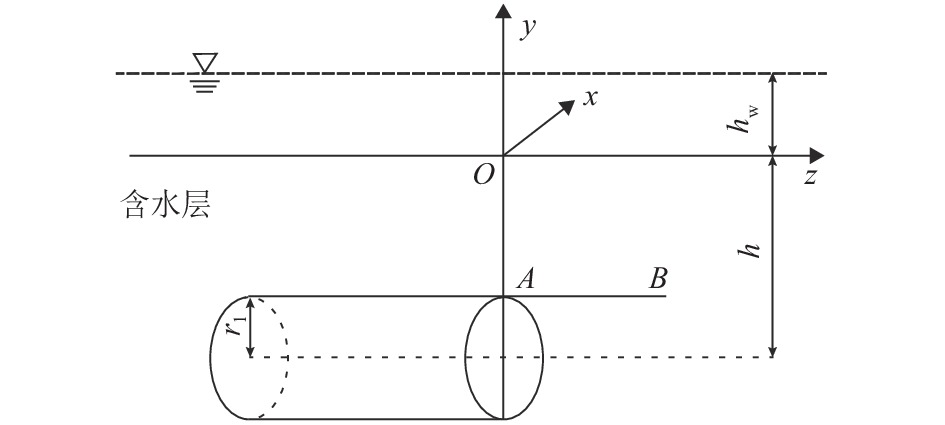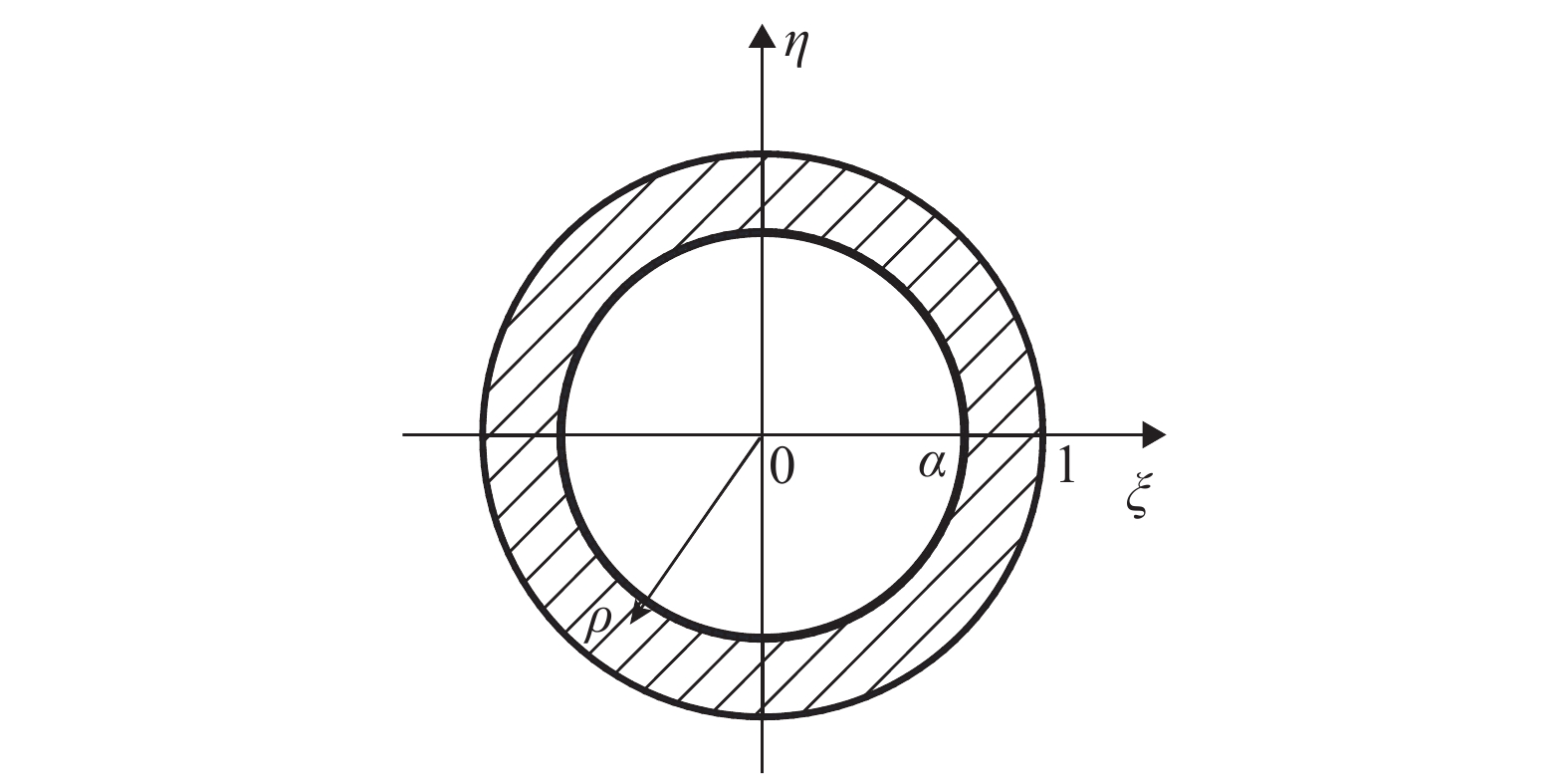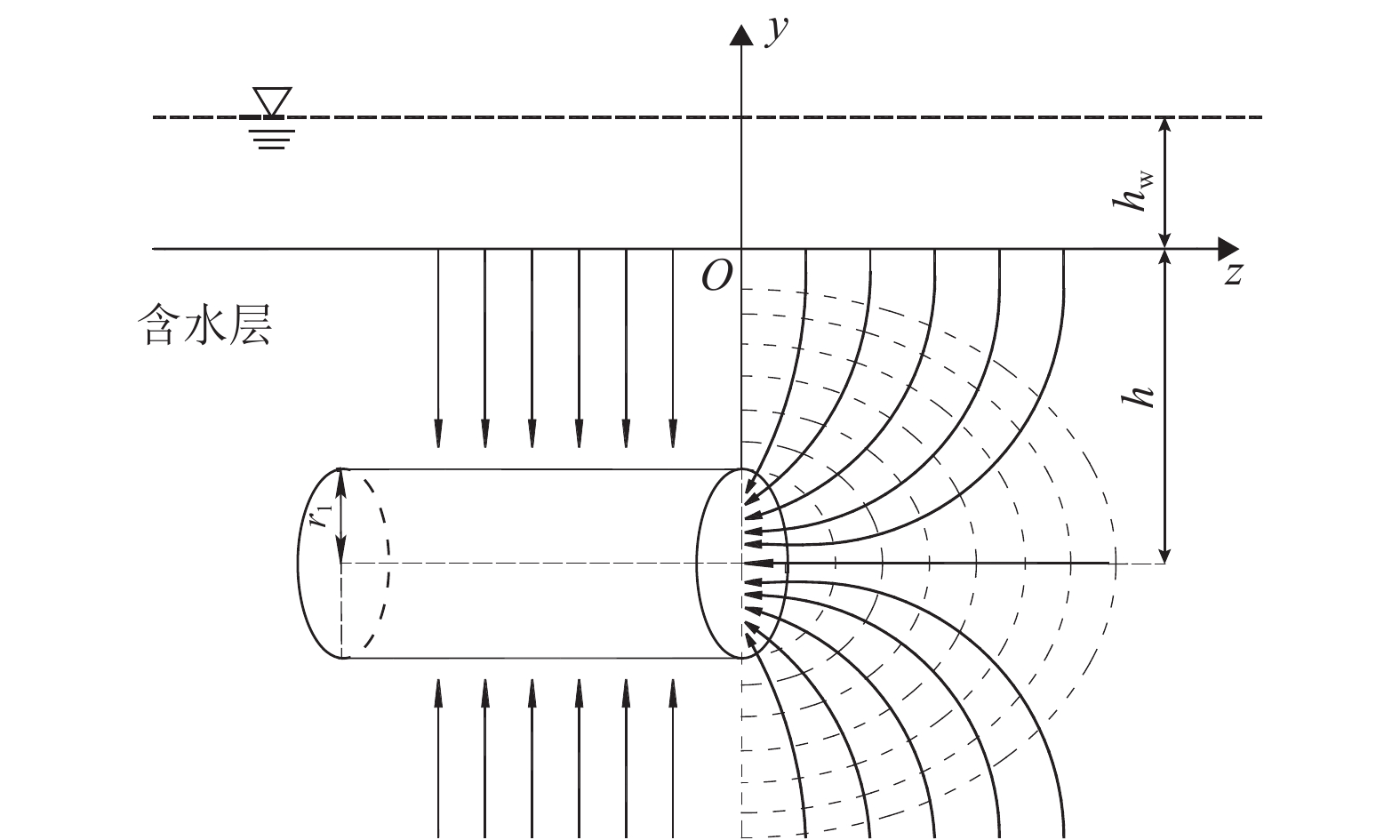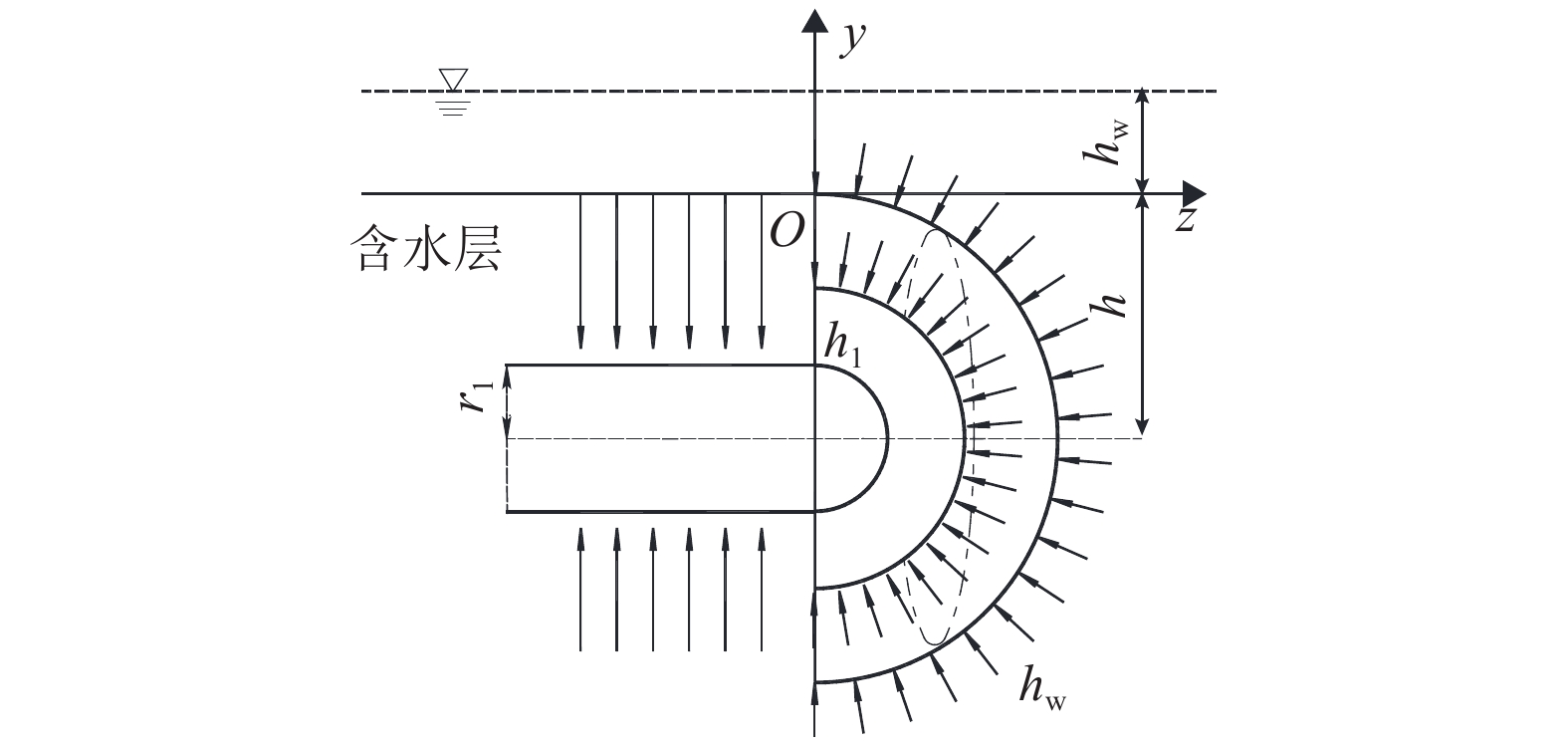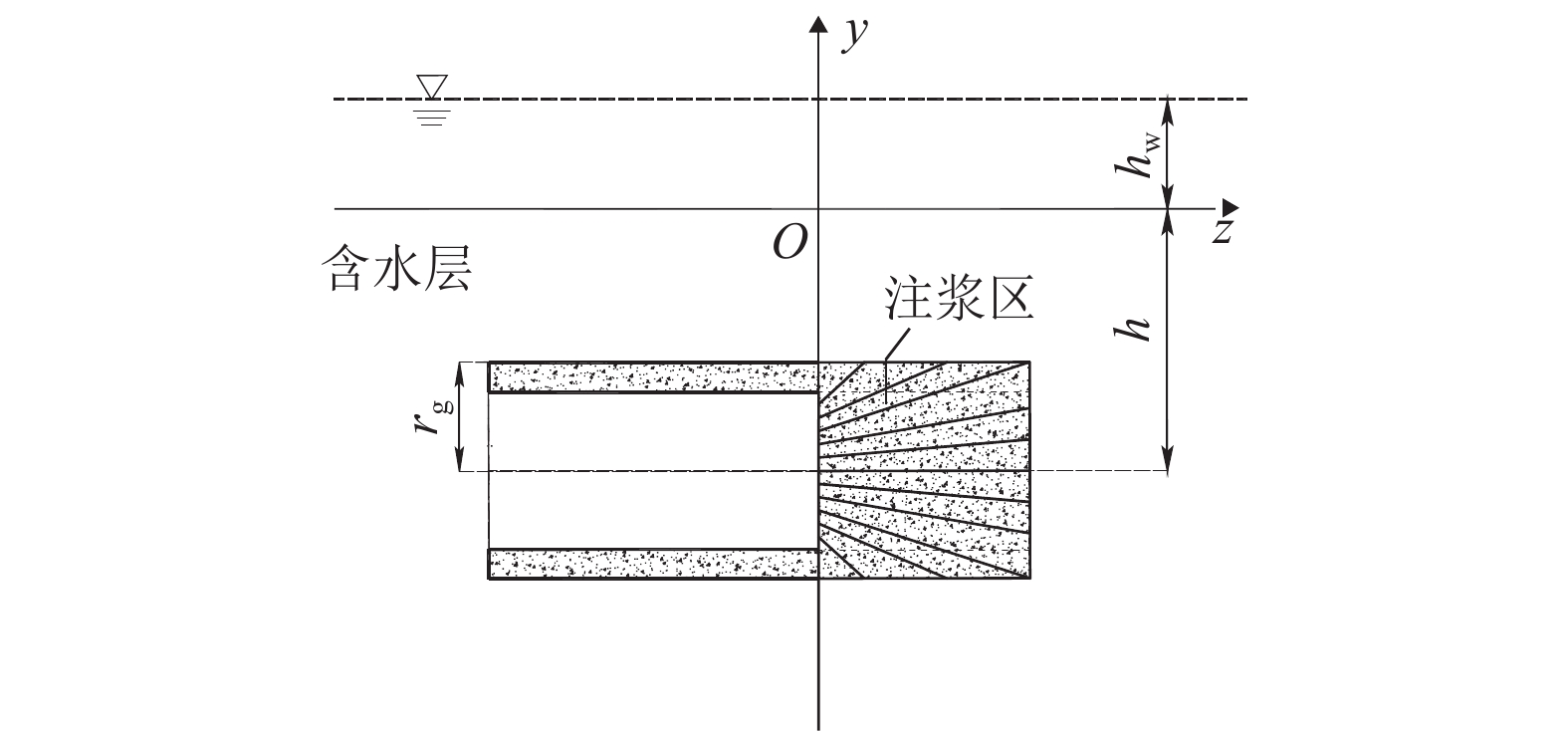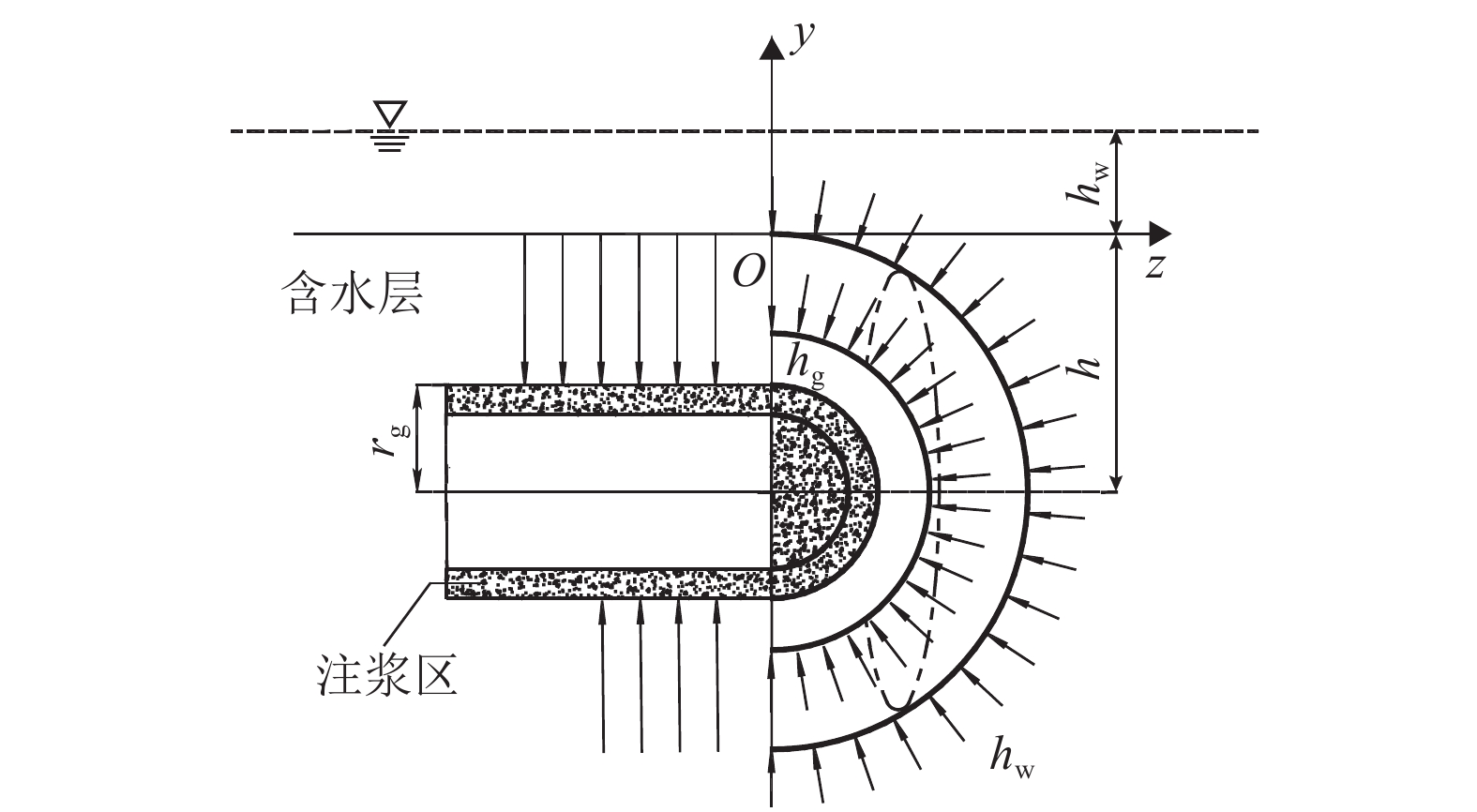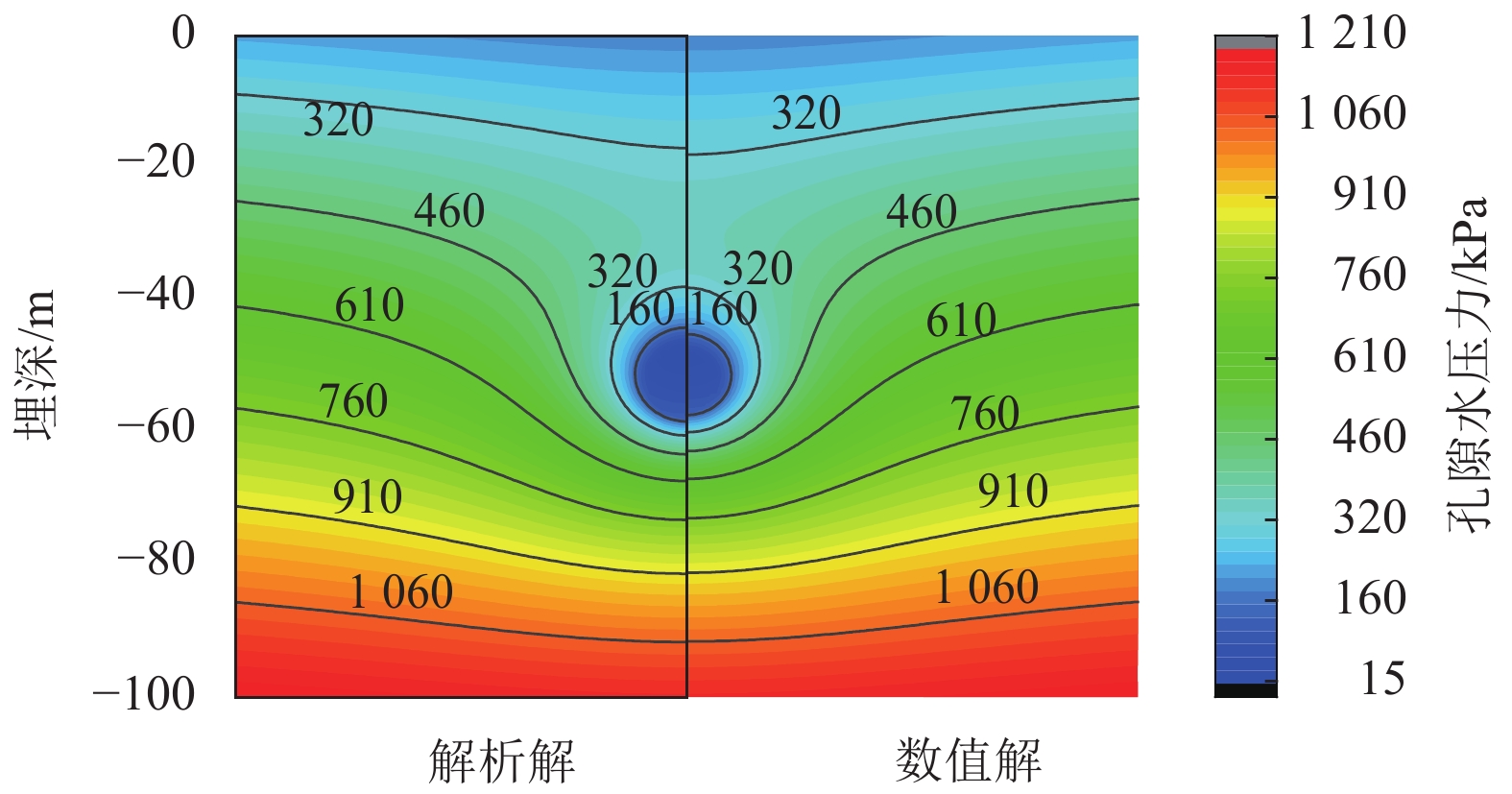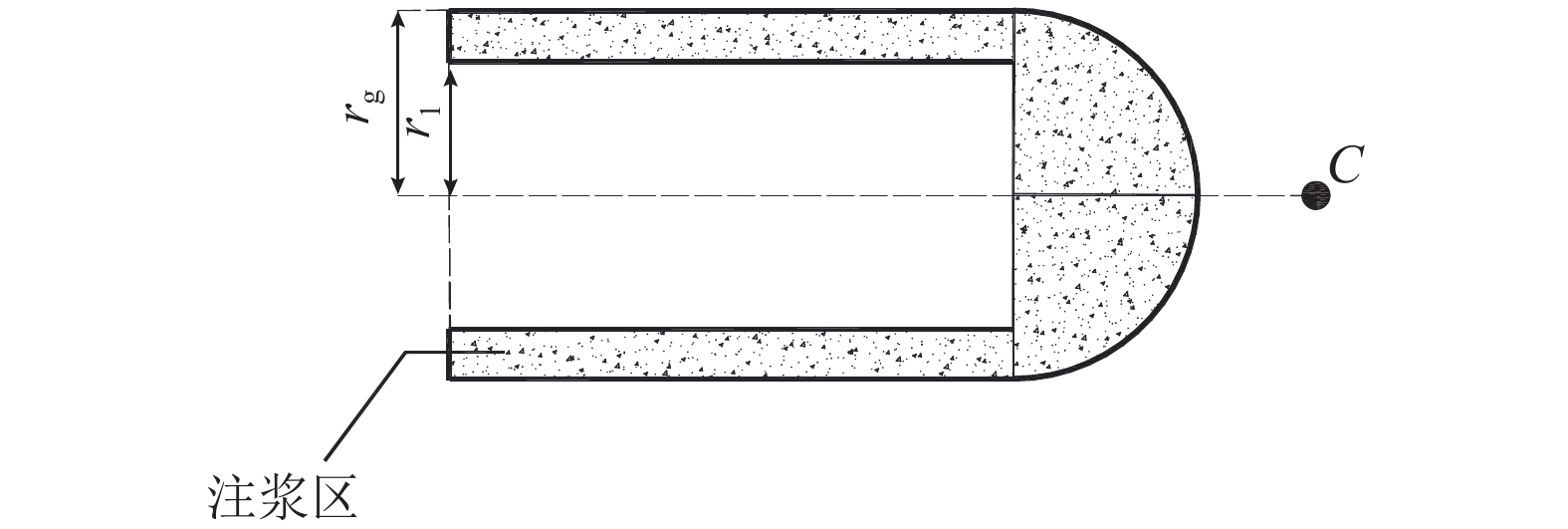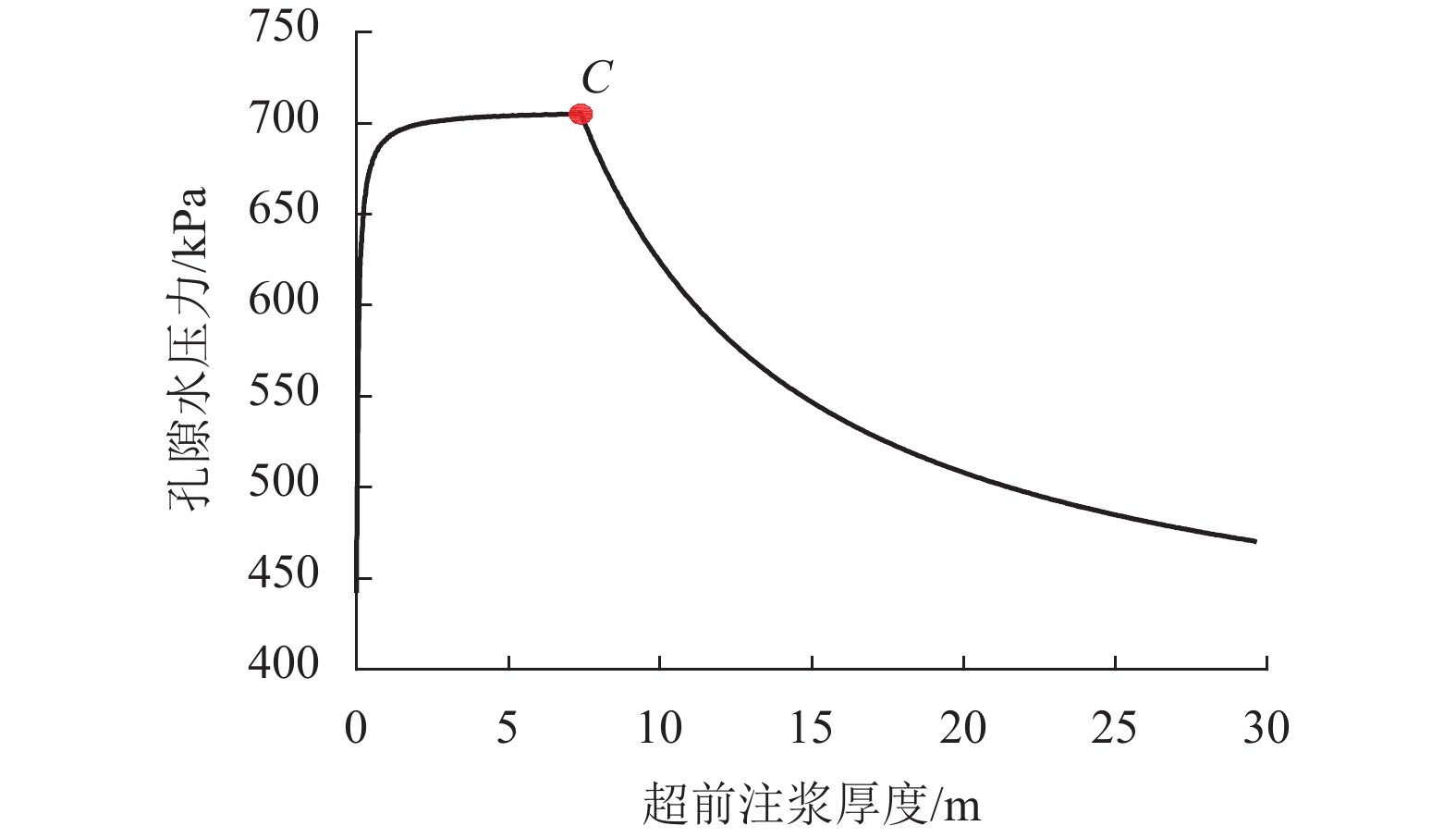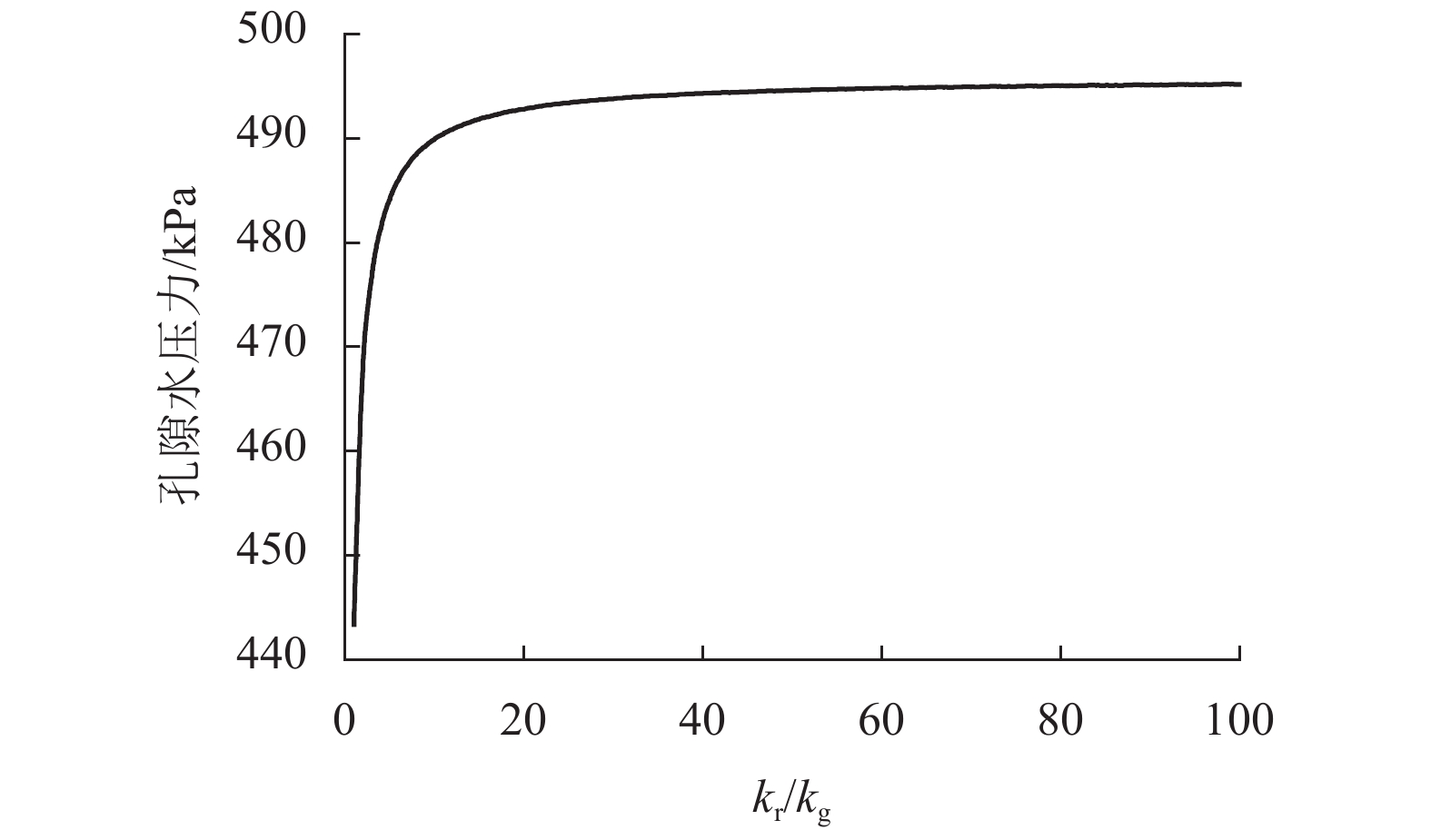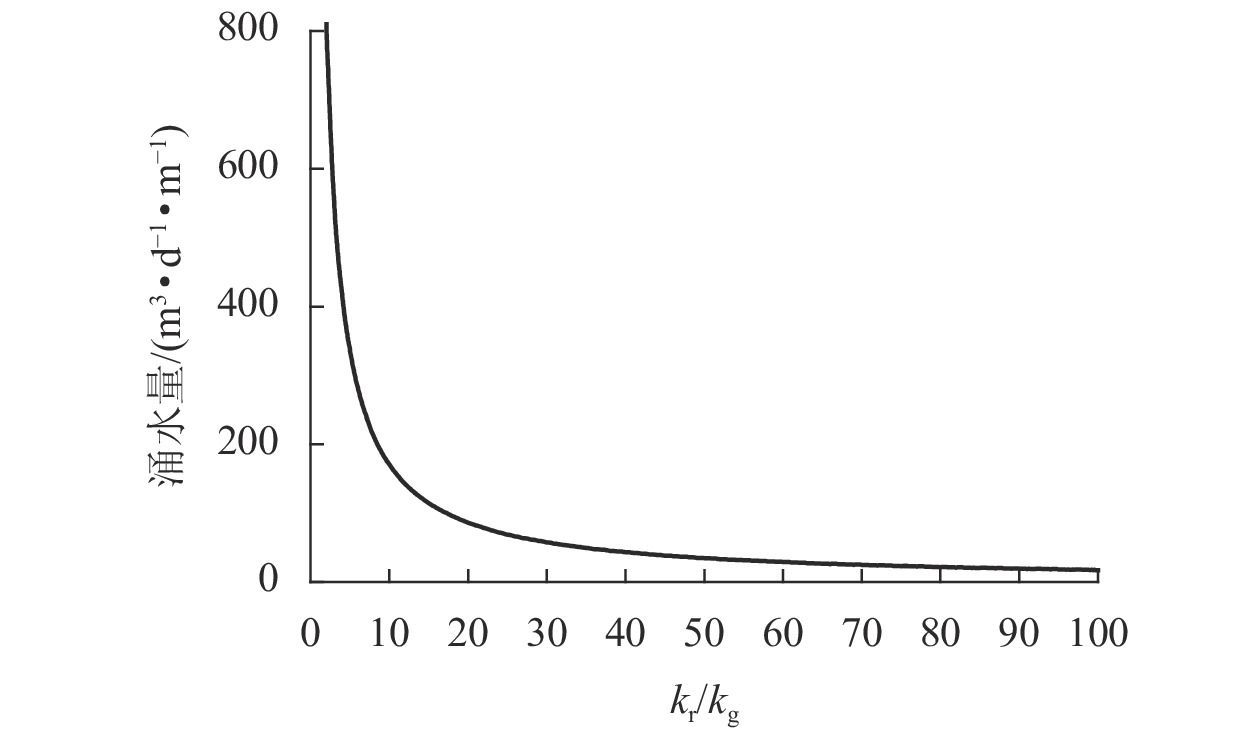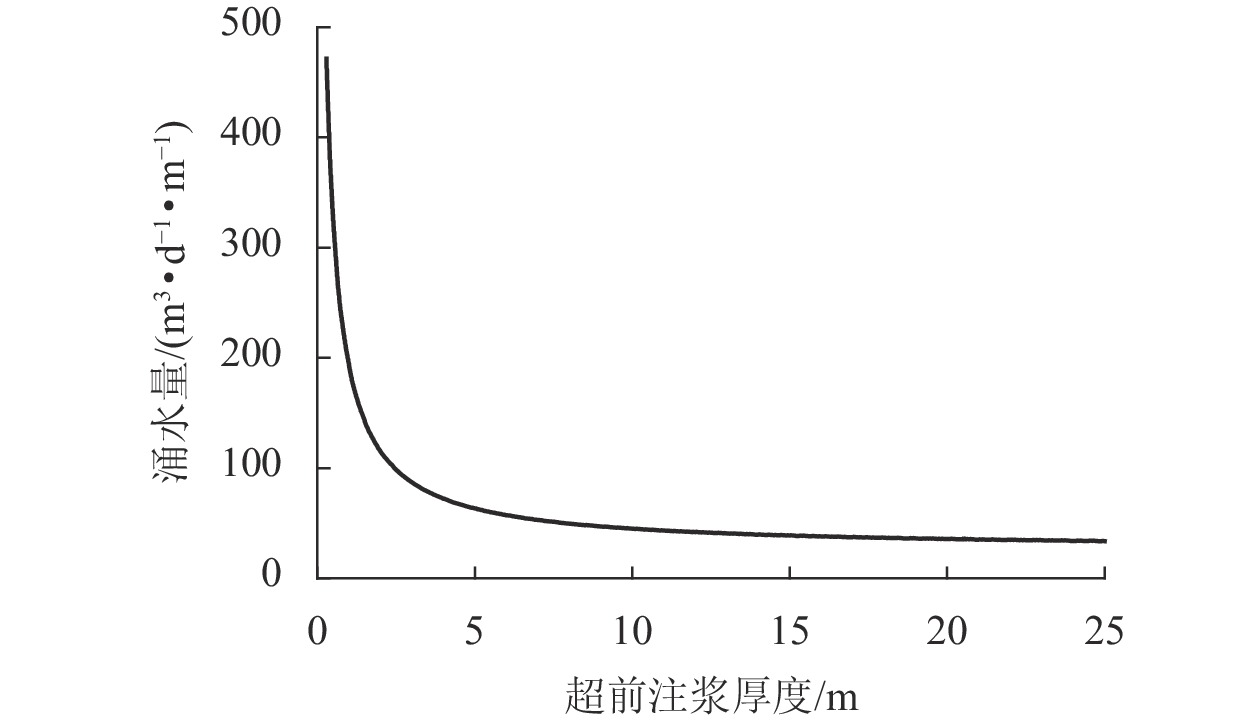Leasing Behavior for Autonomous VehiclesConsidering Latent Variables
-
摘要:
将自动驾驶汽车(autonomous vehicle,AV)与分时租赁、点对点(peer-to-peer,P2P)租赁模式相结合,为出行者提供新型的出行方式. 为探究出行者租赁自动驾驶汽车的行为特征,分析出行者对AV分时租赁、AV P2P租赁、私家车、公共交通的选择意愿及其影响因素. 基于出行方式选择意愿的调查数据,将结构方程模型(structural equation model,SEM)与多项Logit (multinomial Logit,MNL)模型相结合,建立同时标定显变量与潜变量参数的结构方程-多项Logit (structural equation-multinomial Logit,SE-MNL)模型,对比分析了MNL与SE-MNL模型的参数标定结果. 研究结果表明:在95%的置信水平下,显变量中的出行费用、车内时间、驾照情况、出行目的、婚姻状况以及潜变量中的便捷性、安全性、乘车体验、舒适性对出行者选择AV分时租赁或P2P租赁的影响都是显著的;SE-MNL模型的拟合度较MNL模型高出2%~3%.
-
关键词:
- 交通工程 /
- 机动化交通 /
- 自动驾驶汽车 /
- 出行方式选择 /
- 结构方程-多项Logit模型
Abstract:Combining autonomous vehicle (AV) with time-sharing leasing or peer-to-peer (P2P) leasing, two novel travel modes are provided for travelers. To explore the behavior characteristics of AV rental, travelers’ preferences and influence factors for choosing AV time-sharing leasing, AV P2P leasing, private cars and public transit are analyzed. Based on the preference survey data of travel mode choice, the structural equation-multinomial Logit (SE-MNL) model combining structural equation model (SEM) with multinomial Logit (MNL) model is established, which calibrates the parameters of the observed and latent variables. The comparative analyses are done for the parameter calibration results of the MNL and SE-MNL models. The results show that at 95% confidence level, both the observed variables of travel cost, in-vehicle time, driver’s license status, travel purpose, marital status and the latent variables of convenience, safety, ride experience, ride comfort have significant effects on travelers’ choice of AV time-sharing leasing or P2P leasing. The goodness of fit of the SE-MNL model is 2%~3% higher than that of the MNL model.
-
我国的水下隧道工程建设虽然起步晚于挪威、日本等国家,但随着城市快速建设和各类经济产业蓬勃发展,对交通数量和各类交通形式的需求增加,国内水下隧道建设及研究亦进入快速发展时期. 水下隧道处于被无限水源包裹的特有环境,施工掘进时隧道水环境的稳定是保证施工安全的关键,而涌水量和作用在隧道结构的水压力的合理确定是水下隧道设计施工的核心问题.
目前,有关水下隧道渗流场理论解析的研究主要分为隧道横断面方向的研究和开挖面方面三维纵向研究. El Tani等[1]总结了水下隧道涌水量的常用公式,比较了Goodman、Karlstud、Rat、Lombardi等的方法[2-3]. 王建宇[4]根据竖井理论研究了隧道孔压分布和渗流量的解析解. 王秀英等[5]建立了高水位下隧道渗流量及衬砌外水压力简化模型,给出了解析解. 宋浩然[6]推导了浅埋条件下水下隧道渗流场解析解并进行了验证. 应宏伟等[7]采用镜像方法解决水下隧道渗流问题,为水下隧道水压力涌水量预测及防排水参数设计提供依据.
上述研究均是以隧道横截面为研究对象,流体流线处于隧道横断面所在平面内,渗流等势面与隧道外轮廓面平行,水下隧道横断面内的二维渗流场解析解在文献[8]中已给出. 而掌子面前方地层水压力及渗水量值是水下隧道工程重要参数,是掌子面支护力设计、超前堵水加固设计的重要指标,三维渗流场的理论研究成果较少. 刘维[9]建立了未开挖区地层渗流垂直于开挖面的渗流模型,给出了对应的开挖面前方渗流场解析解. 曹利强等[10]在文献[9]的基础上,考虑覆土层及下卧层的分层性,推导了穿越层中水头分布函数.
三维渗流场的研究由于其空间渗流场分布复杂且无法用复变函数进行解析变换,故水下隧道开挖面前方地层空间内三维渗流场的研究一直以来很难有合理的模型方法. 已有的研究都采用理想化的渗流,均为垂直于开挖面的渗流,在除去开挖面正前方的其他地层位置不发生渗流作用[9-10]. 现有研究假定开挖面前方地层内仅发生水平并指向隧道开挖面方向的渗流,将开挖面前的三维渗流问题转化为了二维水平向渗流问题,这与实际渗流场有较大差异,影响水压力的解析及开挖面稳定性分析. 本文建立了开挖面前方渗流等势面为空间曲面的水下隧道三维渗流模型,推导了以开挖面所在平面为分界线的全部未开挖区半地层空间的渗流解析解,能够对地层开挖面正前方土体以外的空间内渗流水压力分布进行分析,并能预测开挖面渗水量,可为三维渗流场分析及开挖面渗水量计算提供参考. 通过数值仿真解及其他既有理论解对比,验证了本文解析解的有效性. 且在此基础上,对开挖面前方超前注浆加固参数进行了分析,给出了合理超前注浆范围及对应的水压力解析解.
1. 水下隧道渗流场计算模型
圆形水下隧道三维计算模型如图1所示. 图中:AB为拱顶线;hw为海水深度;h为地面与隧道中心线之间的距离;r1为隧道开挖半径. 作如下基本假定:
1) 土体、围岩均为各向同性均匀连续介质,土体和水不可压缩;
2) 稳定渗流状态,等水头边界下渗流方向为径向渗流,发生渗流和排水过程中均不影响边界处水头值hw(海底边界水头值等于海水深度值)与隧道内边界处的总水头h1;
3) 由于渗流边界条件固定,所以可认为开挖面后方渗流场为二维平面渗流场,渗流平面垂直于隧道轴线方向,与隧道横断面共面. 隧道开挖面前方(未开挖区)地层内渗流场为三维渗流场.
2. 水下隧道三维渗流场解析
2.1 隧道围岩x-y平面渗流场解析
根据流体源汇理论,通过复变函数法,变换式为
z=w(ζ)=−iA1+ζ1−ζ, 或
ζ=f(z)=z+iAz−iA, 式中:w(ζ)与f(z)为z平面与ζ平面间相互映射的函数;A为保形映射的中间变量[11],如式(2)所示.
将z平面(z = x + iy)含水层区域保形映射为ζ平面(ζ=ξ + iη=ρeiε)内径为α (如式(3)所示)、外径为1的圆环,如图2所示.
A=h(1−α2)1+α2=√h2−r21, (2) α = hr1−√(hr1)2−1. (3) 求得水下隧道含水层的二维平面渗流场及涌水量的解析解[12]为
{Qr=2πkr(h1−hw)lnα,Hr(x,y)=h1−hwlnαln√x2+(y+A)2x2+(y−A)2+hw,pr(x,y)=[h1−hwlnαln√x2+(y+A)2x2+(y−A)2+hw−y]γw, (4) 式中:Qr为围岩区的渗流量;kr为围岩渗透系数;γw为水的重度;Hr(x,y)与pr(x,y)分别为围岩区内任意位置的水头与水压力函数.
2.2 开挖面前方x-y-z空间渗流场解析
由于复变函数是二维解析函数,因此不能用来解三维问题. 本文假设隧道覆土厚度足够大的深埋隧道,隧道直径相对于覆土厚度足够小,建立该条件下的三维渗流场模型,得出三维渗流场解析解. 并对比相关数值结果验证本文解析解的有效性. 三维渗流场如图3所示. 参考不完整井渗流分析方法[13],隧道直径相对于覆土厚度很小时,由于水力梯度的作用,渗流呈轴对称性,同时结合不完整井渗流模型[14-15],将模型简化为渗流等势面,即距隧道中心线半径为r (式(5))的空间半球面.
r=√x2+(y+h)2+z2. (5) 开挖面所在平面为渗流等势面底面,隧道开挖边界线所在的渗流等势面水头值为h1,取距隧道中心线h处为远场水头,其所在渗流等势面总水头值大小等于海水深度值hw,开挖面前方等势面为以开挖面中心为圆心的一组同心半球面,建立开挖面前方地层渗流模型如图4所示. 通过该模型,将开挖面前方地层的任意三维不规则等势面渗流转化成球对称渗流,开挖面前方整个地层空间内流体向开挖临空面进行渗流.
渗流作用下流体的连续性方程为
∂u∂x+∂v∂y+∂w∂z=0, (6) 式中:u、v、w分别为对应x、y、z坐标方向的速度分量.
当满足球面渗流条件时,变换为Laplace方程形式后可得极坐标下流体的三维渗流连续性方程为
∂2Hr∂r2+2r∂Hr∂r=0. (7) 对式(7)分离变量并积分可得
Hr=c11r+c2, (8) 式中:c1、c2为与边界条件相关的待定系数,如式(9)所示,由开挖面边界和远场边界条件(式(10))确定.
{c1=(hw−h1)r1hr1−h,c2=r1h1−hwhr1−h. (9) Hr={h1,r=r1,hw,r=h. (10) 将式(9)代入式(8)得到满足r1≤r<h边界条件的水头函数为
Hr=[(r−r1)hwh+(h−r)r1h1]r(h−r1). (11) 上述求解中开挖面边缘处h1总水头转换成用压力水头表示的边界条件为
h1=p1γw+r1−h, (12) 式中:$p_1 $为开挖临空面外轮廓线处压力水头值,取为0.
根据总水头H(x,y,z)等于位置水头与压力水头之和,即
H(x,y,z)=p(x,y,z)γw+y, (13) 式中:p(x,y,z)为挖面前方水头等势面上的孔隙水压力分布函数,如式(14)所示.
p(x,y,z)=[(r−r1)hwh+(h−r)r1(p1γw+r1−h)]×γwr(h−r1)−yγw,r1⩽r<h. (14) 当z = 0时,p(x,y,z)为开挖面所在平面非临空面内地层渗流场.
当0<r ≤ r1时,水头等势面的底面为开挖面临空面,水头等势面的水头值可由临空面处总水头给出,且由于水力梯度的存在,外环水头值大于内环水头值,所以,当用开挖面上半部分的总水头表示开挖面前方等势面水头值时满足球面渗流条件,用临空面处总水头表示的前方地层等势面处水头函数为
H(x,y,z)=Hout=pout(x,y,z)γw+r−h, (15) 式中:Hout为等势面在开挖临空面上的水头值;pout(x,y,z)为开挖临空面外轮廓线处压力水头值,取为0.
开挖面上任意点总水头值仅与位置水头有关,位置水头值等于该位置纵向坐标值,即y = rsin θ − h,θ为开挖面前方地层坐标与开挖面中心点连线在xOz平面上投影的夹角,开挖面前方地层等势面上总水头满足式(16)所示关系.
H(x,y,z)=y+p(x,y,z)γw. (16) 联立式(15)、(16)可得开挖面前方0<r<r1范围内孔隙水压力分布函数为
p(x,y,z)=(r−h−y)γw,0<r⩽r1. (17) 根据Bear[16]通过圆形等势面渗流量计算方法,未开挖区内流体向隧道开挖面方向的渗流流量Q如式(18)所示,可以通过选取任意球形等势面进行积分,求得
Q=∬Dvds=2πr2|vr|, (18) 式中:D为渗流计算区;vr为开挖面前方半径为r的等势面处流体向掌子面的径向渗流速度,根据达西定律表示如式(19)所示.
vr=−kr∂Hr∂r, (19) 代入式(18),求得
Q=2πkr(hw−h1)r1hh−r1. (20) 2.3 开挖面超前注浆x-y-z空间渗流场解析
为保障水下隧道安全快速施工,大量采用全断面帷幕注浆工艺,超前注浆部孔方法如图5所示,超前注浆三维渗流模型如图6. 图5、6中:hg为注浆圈外边缘总水头值;rg为注浆圈外半径.
根据式(11)可得,考虑注浆圈的围岩中rg≤r<h水头分布函数及注浆圈中r1≤r<rg范围内水头分布函数分别为
Hr=(r−rg)hwh+(h−r)rghgr(h−rg), (21) Hg=(r−r1)hgrg+(rg−r)r1h1r(rg−r1). (22) 由式(18)、(19)可得通过围岩和注浆圈的涌水量Qr和Qg分别为
{Qr=2πkr(hw−hg)rghh−rg,Qg=2πkg(hg−h1)r1rgrg−r1, (23) 式中:kg为注浆圈渗透系数.
由流体的连续性原理可知通过围岩渗水量应与通过注浆圈渗水量相同,由式(23)得
hg=kr(rg−r1)hhw/kg+(h−rg)h1r1kr(rg−r1)h/kg+(h−rg)r1. (24) 将式(24)代入式(23)可得超前注浆后隧道开挖面前方渗水量为
Q=2πkr(hw−h1)r1rghkr(rg−r1)h/kg+(h−rg)r1. (25) 当rg = r1时,式(25)退化为未进行超前注浆情况下的开挖面涌水量值. 将式(21)、(22)代入式(14)、式(17)可得水压力分布函数为
p(x,y,z)={A1γwr(h−rg)−yγw,rg⩽r<h,A2γwr(rg−r1)−yγw,r1⩽r<rg,(r−h−y)γw,0<r⩽r1, (26) 式中:${A_1} = \left( {r - {r_{\rm{g}}}} \right){h_{\rm{w}}}h + \left( {h - r} \right){r_{\rm{g}}}{h_{\rm{g}}} $;$ {A_2} = \left( {r - {r_1}} \right){h_{\rm{g}}}{r_{\rm{g}}} + \left( {{r_{\rm{g}}} - r} \right){r_1}{h_1} $.
当rg = r1时,式(26)退化为未进行超前注浆情况下的开挖面前方半地层空间内的水压力分布函数.
3. 工程算例及解析解的验证
选取厦门翔安海底隧道F4风化槽区段工程作为算例,相关参数见表1,应用本文方法对开挖面前方水压力分布及渗水量值进行分析,并采用FLAC 3D数值软件对该工程案例进行模拟分析,岩体的渗透系数为5 × 10−6 m/s,为了消除边界效应对渗流的影响,模型范围为:0 ≤ x ≤ 8r1,−12r1 ≤ y ≤ 0 ,−8r1 ≤ z ≤ 8r1. 具体模拟过程为:1) 对水压力场进行初始化;2) 固定x = 8r1,y = ±8r1,z = −12r1边界平面,y = 0处的孔隙水压力值,将x = 0平面设为不透水边界;3) 不考虑水下隧道分部开挖对渗流场的影响,一步开挖至z = 0处,将开挖面设为排水边界,其他开挖边界设为不透水边界;4) 迭代计算至渗流场稳定,对比验证本文解的正确性.
表 1 厦门翔安海底隧道注浆参数Table 1. Grouting parameters of Xiang’an under ocean tunnel in Xiamenr1/m rg/m h/m hw/m kr/(m•s−1) kg/(m•s−1) 7.4 13.4 52.4 20.0 5 × 10−6 5 × 10−8 在不考虑超前注浆时,开挖面前方5 m处水压力xOy平面内分布的本文解与数值解如图7所示,在靠近开挖面范围内水压力值解析解与数值解误差为5%以内,在距离开挖面更远的范围内,误差逐渐减小,水压分布表明,掌子面前方渗流整体呈现三维漏斗,靠近开挖面区域呈现椭圆分布,表明了流体从地层前方半无限空间向开挖面的汇集过程.
文献[17-18]指出掌子面突涌水起始点为开挖面拱腰至拱顶范围处,所以进一步验证本文解的正确性,本文选取开挖面前方50 m范围内拱顶AB线上孔隙水压力进行分析.
解析解与数值解对比如图8所示,由图可知:开挖面附近20 m范围内孔隙水压力误差为5%以内;开挖面20 m远距离处,开挖所引起的水压力分布变化影响趋势明显减弱,水力梯度在距离开挖面45 m处趋近于0,这与文献[10]得出的水压梯度影响范围为隧道3倍洞室直径区域的结果相近.
4. 三维渗流场超前注浆参数分析
在水下隧道施工过程中,为了减小隧道开挖面承受的前方地层空间的水压力,削弱由于渗流造成的对开挖面稳定的影响,防止塌方突水事故,超前注浆工法对水下隧道开挖面进行堵水加固被广泛采用[19]. 在以往的水下隧道超前注浆施工过程中,超前注浆参数的确定多基于现场经验,缺乏理论基础,本文应用当量注浆三维渗流模型,从解析的角度对超前注浆参数的进行分析.
4.1 超前注浆圈厚度对掌子面前方水压力影响
应用本文解析方法对水下隧道注浆厚度对水压力影响进行分析,选取距离开挖面1倍洞室直径距离的前方地层点C处,点C与超前注浆相对位置关系如图9所示.
点C水压力随注浆厚度变化关系如图10所示,在未注浆时,由于渗流作用,点C水力梯度较大而孔隙水压力较低. 随着超前注浆厚度(rg − r1)变大,降低了渗流过程中的水力梯度,使点C处孔隙水压力升高. 当注浆范围超过点C后,即该点处于超前注浆圈层范围内,水压力随着注浆厚度的增加而减小,堵水加固效果愈加显著. 当超前注浆圈层达到2倍隧道洞室直径范围后,曲线斜率逐渐减缓,表明水力梯度变化减弱,更大的注浆范围不能带来明显的降压堵水效果,因此对开挖面前方2倍洞室直径范围内进行超前注浆,基本为最佳超前注浆界限范围.
4.2 超前注浆相对渗透系数对水压力影响
应用本文解析方法对水下隧道超前注浆渗透系数对水压力影响进行分析,选取上一节中考虑的最佳超前注浆距离,即距开挖面2倍洞室直径距离的前方地层点D处进行分析,如图11所示.
水压力随注浆相对渗透系数变化如图12所示. 由图可知:随着注浆相对渗透系数的增加,即随着注浆材料的渗透系数逐渐变低,开挖面前方地层点D处的孔隙水压力逐渐升高,代表着堵水加固效果越发明显;当围岩与注浆圈相对渗透系数达到20时,水力梯度逐渐降低而后趋近平缓. 所以在超前注浆过程中,超前注浆材料的选取为kr/kg值约为20即可充分保证超前地层加固堵水的效果,还可充分优化工程经济.
4.3 超前注浆相对渗透系数对开挖面涌水量影响
应用本文解析方法对水下隧道超前注浆渗透系数对开挖面涌水量影响进行分析,涌水量随围岩与注浆圈相对渗透系数比值变化如图13所示.
由图13可知:随着注浆相对渗透系数的增加,即随着注浆材料的渗透系数逐渐减小,开挖面涌水量逐渐降低,代表着堵水加固效果越发明显;当围岩与注浆圈相对渗透系数达到50时,水力梯度逐渐降低而后趋近平缓. 所以在超前注浆过程中,超前注浆材料的选取为kr/kg值约为50即可有效控制隧道掌子面突涌水量,进入合理范围.
4.4 超前注浆厚度对涌水量影响
应用本文解析方法对水下隧道超前注浆厚度对开挖面涌水量影响进行分析,选取超前注浆kr/kg=50情况下,涌水量随超前注浆厚度变化如图14所示.
由图14可知:未进行注浆时,该风化槽地质条件下涌水量规模较大,极易发生突涌水事故. 当采取超前注浆施工后,随着注浆厚度的增加,涌水量显著降低,当注浆厚度为1倍洞室直径时候,涌水量减小程度已经不明显,因此从涌水量的角度对超前注浆进行分析时候,超前注浆厚度至少为1倍洞室直径方可最佳地对隧道开挖面涌水量进行控制. 另外需要补充的是,当超前注浆厚度超过隧道半径与衬砌外注浆圈厚度时,本文解析模型半球形等势面的假定对计算结果会带来误差,从超前注浆厚度对涌水量和水压力的影响曲线发现:当超前注浆厚度大于1倍洞室直径后的涌水量模型计算结果误差在2%以内,水压力计算结果误差影响低于5%;当超前注浆厚度大于2倍洞室直径后,水压力与涌水量变化曲线斜率趋于平缓,水力梯度变化减弱,更大的注浆范围不能带来更多的降压堵水效果,解析模型半球形等势面的假定对计算结果带来的误差可忽略.
5. 结 论
鉴于以往对水下隧道开挖面前方三维渗流场研究的匮乏,本文提出了考虑开挖面前方渗流等势面为空间曲面的水下隧道三维渗流解析模型. 通过对比数值仿真解和其他既有理论解,验证了本文解的正确性. 本研究的主要发现总结如下:
1) 给出以开挖面所在平面为分界线的全部未开挖区半地层空间的水头分布函数,得出了开挖面渗水量计算公式及前方地层孔隙水压力公式.
2) 通过工程实例将本文解析解和数值解进行对比,在所给工况下本文解与数值解误差不超过5%,验证了本文模型有较高的精度.
3) 分析了超前加固厚度,土体与超前加固渗透系数相对值等因素对开挖面前方水压力及渗水量的影响. 当对开挖面前方2倍洞室直径范围内进行超前注浆,并选取围岩与注浆圈相对渗透系数kr/kg = 50时,可同时有效控制水压力与隧道突涌水量对水下隧道掌子面施工的影响.
本文通过解析方法,为三维渗流场解析计算提供了新依据,为水下隧道超前注浆参数的选取提供了理论参考.
-
表 1 出行方式选择影响因素及水平值
Table 1. Influencing factors and their levels for travel mode choice
影响
因素出行
方式因素水平值 水平 1 水平 2 水平 3 出行费用
/元私家车 10 15 20 AV 分时租赁 20 30 40 AV P2P 租赁 15 25 35 公交/地铁/轻轨 2 4 6 车内时间
/min私家车 30 45 60 AV 分时租赁 30 40 50 AV P2P 租赁 35 45 55 公交/地铁/轻轨 60 70 80 等待时间
/minAV 分时租赁 1 3 5 AV P2P 租赁 1 3 5 公交/地铁/轻轨 2 6 10 停车费用/元 私家车 0 10 20 表 2 社会经济属性的描述性统计结果
Table 2. Descriptive statistical results of socio-economic attributes
因素 取值 有私家车
人群占比/%无私家车
人群占比/%性别 男 44.3 45.0 女 55.7 55.0 年龄 18~30 岁 50.6 87.4 31~45 岁 33.6 6.3 46~65 岁 13.2 5.4 > 65 岁 2.6 0.9 职业 学生 31.6 46.9 上班族 49.7 28.8 自由职业者 9.5 6.3 其他职业者 9.2 18.0 教育程度 高中及以下 10.6 6.3 大专 16.9 9.9 本科 44.3 45.0 硕士及以上 28.2 38.8 婚姻状况 未婚 48.9 86.5 已婚 51.1 13.5 住房情况 租房 20.7 27.0 自有住房 51.1 18.9 住宿舍 28.2 54.1 小孩数 0 人 54.0 90.1 1 人 35.4 9.0 ≥ 2 人 10.6 0.9 月收入 < 3000 元 33.3 54.1 3000~5999 元 27.9 27.0 6000~9999 元 23.3 9.9 ≥ 10000 元 15.5 9.0 表 3 MNL与SE-MNL模型对出行方式选择和历史出行行为的标定结果
Table 3. Calibration results of MNL and SE-MNL models for travel mode choice and historical travel behavior
变量名称 有私家车青年人 无私家车青年人 MNL 模型参数值 SE-MNL 模型参数值 MNL 模型
t 检验值SE-MNL 模型
t 检验值MNL 模型参数值 SE-MNL 模型参数值 MNL 模型
t 检验值SE-MNL 模型
t 检验值常数项 0.022 0.024 0.273 0.047 −0.215 6.300 −1.858 2.548* 出行费用 −0.054 −0.051 −11.167* −10.476* −0.068 −0.071 −8.566* −8.802* 车内时间 −0.027 −0.026 −7.753* −7.667* −0.052 −0.052 −8.231* −8.102* 等待时间 −0.044 −0.045 −6.380* −1.706 −0.017 −0.018 −0.851 −0.887 停车费用 −0.035 −0.043 −1.364 −6.307* 驾照情况 0.520 0.519 3.739* 3.725* −1.073 −1.079 −6.231* −6.246* 每周平均出行数 ≤ 10 次 0.719 0.720 4.077* 4.000* −0.294 −0.326 −0.992 −1.099 每周平均出行数 > 10 次 0.204 0.208 1.075 1.086 −0.254 −0.273 −0.734 −0.786 日均出行
距离0.007 0.006 0.943 0.592 −0.049 −0.055 −3.315* −3.256* 周出行费用 0.017 0.017 3.521* 3.474* −0.011 −0.011 −1.312 −1.351 上班、上学 −0.770 −0.762 −2.439* −2.137* −1.590 5.275 −1.882 2.046* 外出业务 −0.790 −0.782 −2.293* −2.048* −1.447 5.410 −1.570 2.074* 购物、休闲、
娱乐−1.396 −1.387 −4.152* −3.733* −2.042 4.820 −2.349* 1.865 探亲访友 −1.070 −1.054 −2.873* −2.641* −1.737 5.096 −1.694 1.935 注:*表示显著性水平为0.05时该项为显著性因素,后同. 表 4 MNL与SE-MNL模型对社会经济属性和认知态度特征的标定结果
Table 4. Calibration results of MNL and SE-MNL models for socio-economic attributes and cognition-attitude characteristics
变量名称 有私家车青年人 无私家车青年人 MNL 模型
参数值SE-MNL 模
型参数值MNL 模型
t 检验值SE-MNL 模
型 t 检验值MNL 模型
参数值SE-MNL 模
型参数值MNL模型
t 检验值SE-MNL 模型
t 检验值性别 0.193 0.195 1.754 1.769 0.451 0.455 2.725* 2.742* 年龄 0.014 0.161 0.090 0.792 0.617 1.455 1.017 2.094* 学生 0.442 0.445 1.882 1.864 1.435 1.457 5.483* 5.544* 上班族 −0.312 −0.309 −1.334 −1.310 1.010 1.034 3.769* 3.852* 自由职业者 −0.116 −0.111 −0.426 −0.404 −0.101 −0.096 −0.282 −0.266 其他职业者 −0.420 −0.413 −1.427 −1.389 1.393 1.399 3.315* 3.310* 教育程度 −0.547 −0.551 −3.875* −3.160* −0.198 −0.588 −0.723 −1.550 婚姻状况 0.545 0.441 2.665* 1.763 3.566 3.668 5.378* 5.141* 自有住房 0.310 0.308 1.919 1.907 0.206 0.191 0.909 0.842 住宿舍 0.242 0.226 0.776 0.722 小孩数 −0.302 −0.291 −1.756 −1.467 2.943 2.101 4.373* 3.038* 车内环境 −0.678 −0.296 −6.195 −1.371 便捷性 −0.596 −1.056 4.484 2.079* 安全性 1.530 1.971* 13.488 2.357* 乘车体验 0.051 1.024 8.053 2.063* 舒适性 0.149 2.005* 9.047 2.867* -
[1] CHOUDHURY C F, YANG L, DE ABREU E SILVA J, et al. Modelling preferences for smart modes and services:a case study in Lisbon[J]. Transportation Research Part A:Policy and Practice, 2018, 115: 15-31. doi: 10.1016/j.tra.2017.07.005 [2] BECKER H, CIARI F, AXHAUSEN K W. Modeling free-floating car-sharing use in Switzerland:a spatial regression and conditional Logit approach[J]. Transportation Research Part C:Emerging Technologies, 2017, 81: 286-299. doi: 10.1016/j.trc.2017.06.008 [3] JIN F L, AN K, YAO E J. Mode choice analysis in urban transport with shared battery electric vehicles:a stated-preference case study in Beijing,China[J]. Transportation Research Part A:Policy and Practice, 2020, 133: 95-108. doi: 10.1016/j.tra.2020.01.009 [4] HUI Y, WANG Y J, SUN Q L, et al. The impact of car-sharing on the willingness to postpone a car purchase:a case study in Hangzhou,China[J]. Journal of Advanced Transportation, 2019, 2019: 9348496.1-9348496.11. [5] KIM D, PARK Y, KO J. Factors underlying vehicle ownership reduction among carsharing users:a repeated cross-sectional analysis[J]. Transportation ResearchPart D:Transport and Environment, 2019, 76: 123-137. doi: 10.1016/j.trd.2019.09.018 [6] ALEMI F, CIRCELLA G, HANDY S, et al. What influences travelers to use Uber? Exploring the factors affecting the adoption of on-demand ride services in California[J]. Travel Behaviour and Society, 2018, 13: 88-104. doi: 10.1016/j.tbs.2018.06.002 [7] 唐立,邹彤,罗霞,等. 基于混合Logit模型的网约车选择行为研究[J]. 交通运输系统工程与信息,2018,18(1): 108-114.TANG Li, ZOU Tong, LUO Xia, et al. Choice behavior of taxi-hailing based on mixed-Logit model[J]. Journal of Transportation Systems Engineering and Information Technology, 2018, 18(1): 108-114. [8] HABOUCHA C J, ISHAQ R, SHIFTAN Y. User preferences regarding autonomous vehicles[J]. Transportation Research Part C:Emerging Technologies, 2017, 78: 37-49. doi: 10.1016/j.trc.2017.01.010 [9] STOIBER T, SCHUBERT I, HOERLER R, et al. Will consumers prefer shared and pooled-use autonomous vehicles? A stated choice experiment with Swiss households[J]. Transportation Research Part D:Transport and Environment, 2019, 71: 265-282. doi: 10.1016/j.trd.2018.12.019 [10] ZHOU F, ZHENG Z D, WHITEHEAD J, et al. Preference heterogeneity in mode choice for car-sharing and shared automated vehicles[J]. Transportation Research Part A:Policy and Practice, 2020, 132: 633-650. doi: 10.1016/j.tra.2019.12.004 [11] NAZARI F, NORUZOLIAEE M, MOHAMMADIAN A. Shared versus private mobility:modeling public interest in autonomous vehicles accounting for latent attitudes[J]. Transportation Research Part C:Emerging Technologies, 2018, 97: 456-477. doi: 10.1016/j.trc.2018.11.005 [12] 朱顺应,邓爽,王红,等. 具有模糊特性变量的出行方式预测Logit模型[J]. 交通运输工程学报,2013,13(3): 71-78. doi: 10.3969/j.issn.1671-1637.2013.03.010ZHU Shunying, DENG Shuang, WANG Hong, et al. Predictive Logit model of trip mode with fuzzy attribute variables[J]. Journal of Traffic and Transportation Engineering, 2013, 13(3): 71-78. doi: 10.3969/j.issn.1671-1637.2013.03.010 [13] 李聪颖,邵壮壮,封少帅,等. 自行车骑行者生理、心理与综合负荷感知模型[J]. 交通运输工程学报,2020,20(1): 181-191.LI Congying, SHAO Zhuangzhuang, FENG Shaoshuai, et al. Physiology,psychology and comprehensive loading perception models of cyclists[J]. Journal of Traffic and Transportation Engineering, 2020, 20(1): 181-191. [14] 刘志伟,刘建荣,邓卫. 考虑潜在类别的市内机动化出行行为模型[J]. 西南交通大学学报,2021,56(1): 131-137.LIU Zhiwei, LIU Jianrong, DENG Wei. Inclusion of latent class in behavior model of motorized travel in city[J]. Journal of Southwest Jiaotong University, 2021, 56(1): 131-137. [15] 关宏志. 非集计模型: 交通行为分析的工具[M]. 北京: 人民交通出版社, 2004. [16] 吴明隆. 结构方程模型: AMOS的操作与应用[M]. 2版. 重庆: 重庆大学出版社, 2010. [17] 聂垚,杨蓉,吴丽霞. 基于SEM-BL模型的居民轨道交通方式选择行为研究[J]. 交通运输部管理干部学院学报,2019,29(2): 33-37. 期刊类型引用(8)
1. 付涛,景兴淇,李正雄,任涛. 离散型制造车间AGV小车自主避障路径选择研究. 机械设计与制造. 2024(04): 238-243 .  百度学术
百度学术2. 谢济铭,夏玉兰,秦雅琴,赵荣达,刘兵,段国忠,陈金宏. 基于双向长短期记忆网络的城市快速路合流区车速预测. 西南交通大学学报. 2024(05): 1235-1244 .  本站查看
本站查看3. 吴少峰,陈智威,张高峰,陈钦,徐进. 基于实车数据的高速公路行驶轨迹偏移和车道侧向余宽. 中国公路学报. 2023(05): 197-209 .  百度学术
百度学术4. 徐进,王延鹏,陈海源,张晓波,潘存书. 山区公路回头曲线小客车纵向行驶特性及运行速度模型. 吉林大学学报(工学版). 2023(12): 3432-3445 .  百度学术
百度学术5. 徐进,杨雪敏,张雪榆,张杰,孔繁星,矫成武. 基于自然驾驶数据的高密度立交出入口车辆轨迹特征研究. 交通信息与安全. 2023(06): 20-31+81 .  百度学术
百度学术6. 戴振华,廖祺硕,潘存书,尚彦宇,徐进. 城市干路交叉口右转车辆轨迹流线与曲率特性分析. 交通信息与安全. 2022(04): 157-166 .  百度学术
百度学术7. 陈莹,王晓辉,张晓波,陈海源,徐进,杜志刚. 山区公路回头曲线的车道偏移行为与自由行驶轨迹模型. 交通运输工程学报. 2022(04): 382-395 .  百度学术
百度学术8. 陈钦,陈海源,王晓辉,张晓波,徐进. 山区公路回头曲线车辆横向加速度特性研究. 科学技术与工程. 2022(34): 15372-15381 .  百度学术
百度学术其他类型引用(6)
-






 下载:
下载:













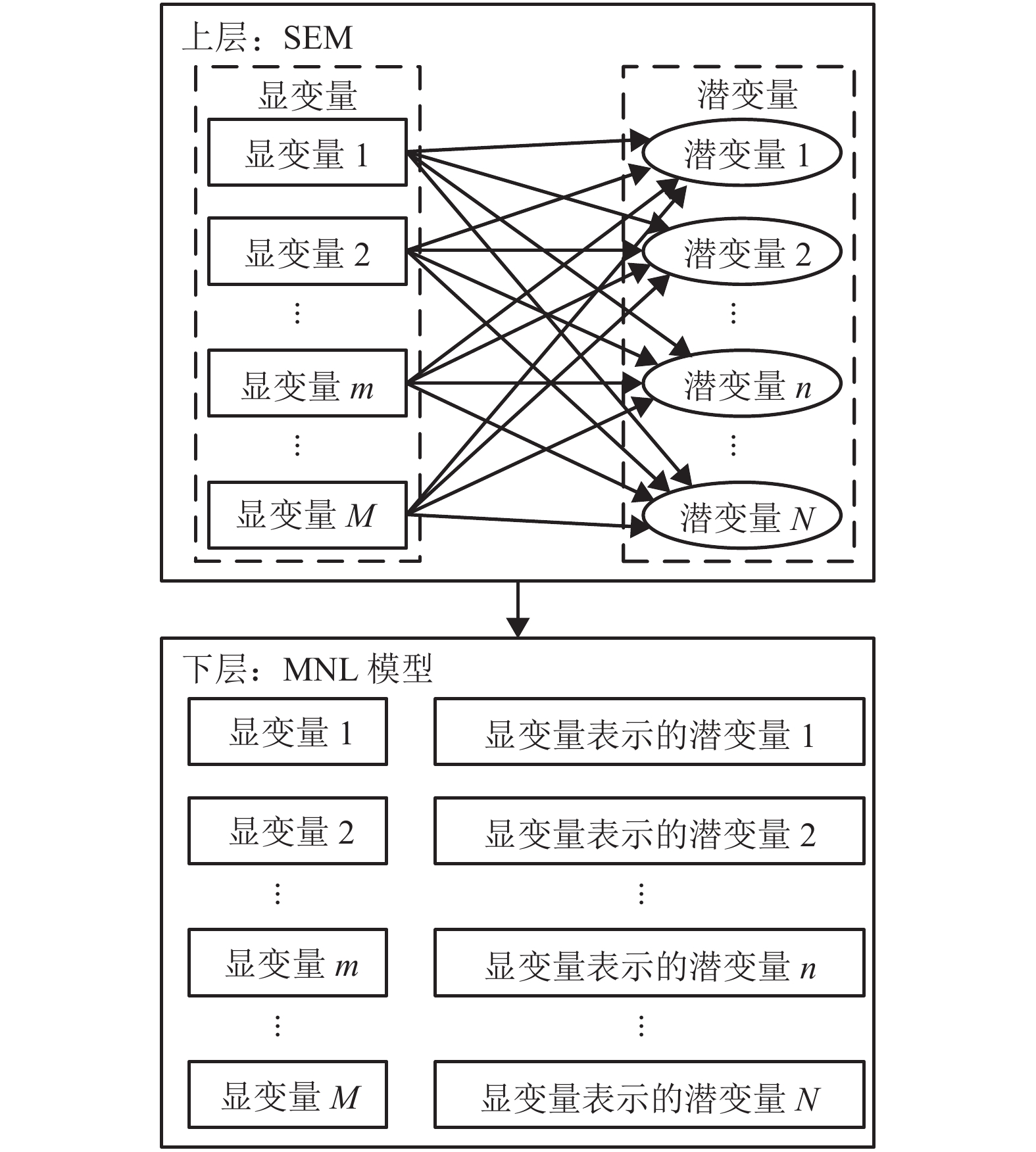
 下载:
下载:
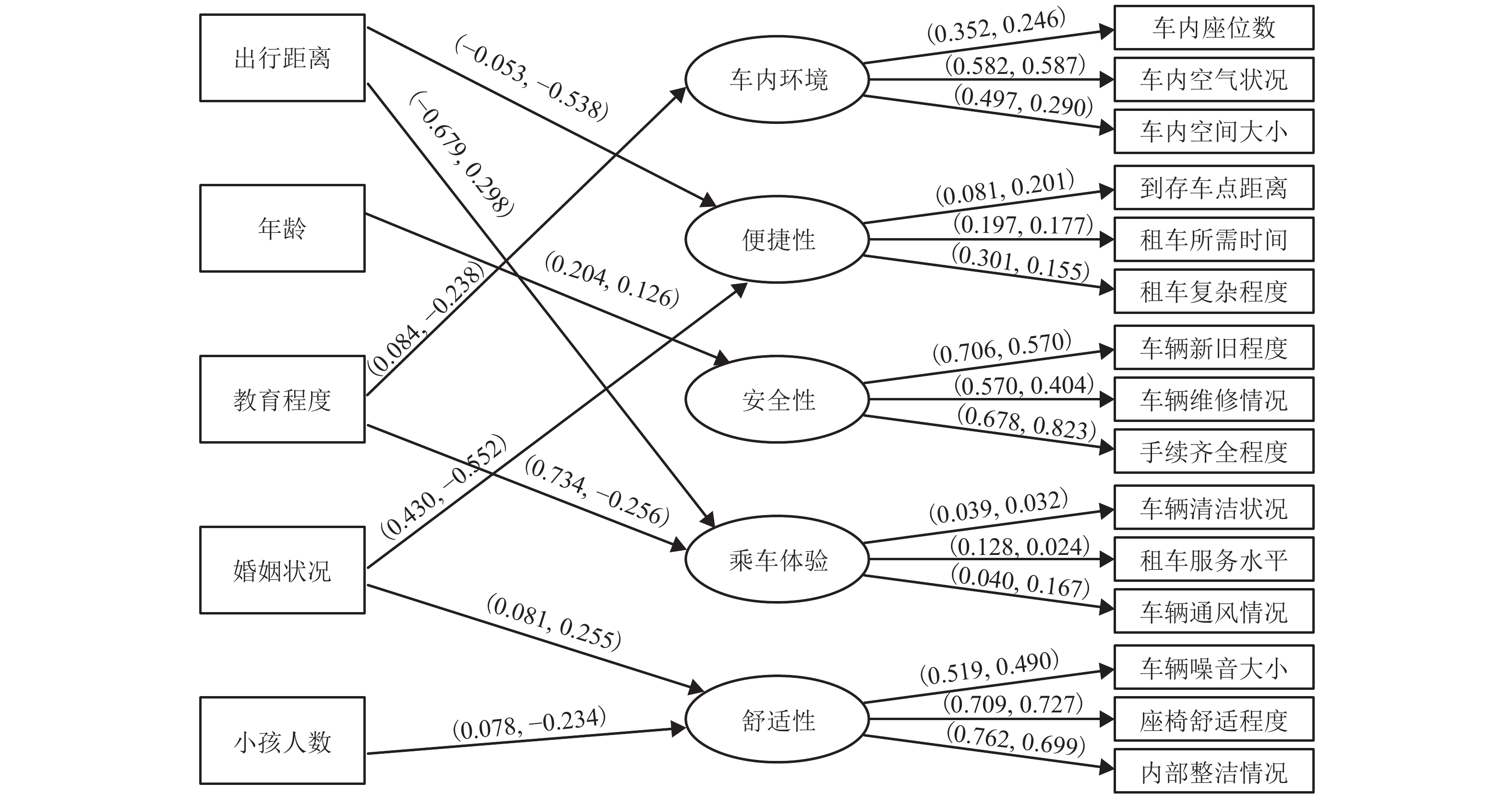
 百度学术
百度学术

